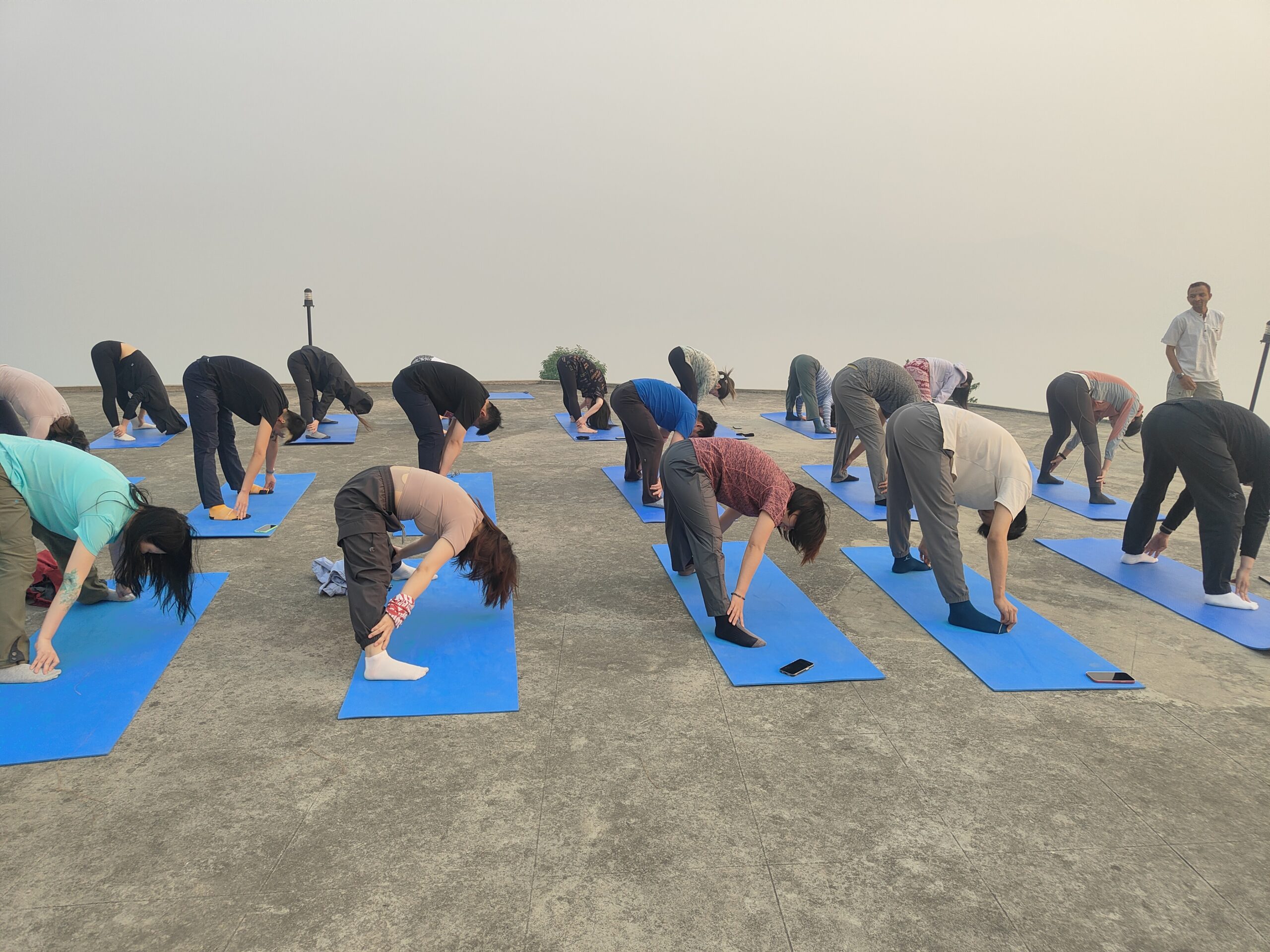Introduction
The changes in the lifestyle of modern living have brought about frequent challenges needing physical therapies and hamstring muscles exercises for maintaining flexibility and mobility. In contrast to the advanced medical techniques, and medications for recovery from injuries, surgeries, or any chronic condition, yoga has gained popularity for the advantages of healing through movement. Yoga and rehabilitation conjugate for maintaining physical mobility, along with balance and coordination while supporting recovery. Yoga offers various practices providing physical, mental, and emotional advantages that contribute as an effective tool in physical rehabilitation. The chief yoga’s role in physical rehabilitation is the possibility of healing through movement, which might feel slow but ultimately advantageous in a long continuous run.
Key Benefits of Yoga in Physical Rehabilitation
- Flexibility and Mobility Enhancement
Yoga consists of gentle poses that aid in the gradual restoration of mobility by elongating muscles and relieving tension which is very helpful in recovering from injuries or surgeries promoting joint health and also preventing the buildup of scar tissue, which can somewhat obstruct movement.
- Safely Strengthening Muscles
Yoga comprises poses that use body weight without the need for any extra heavy weights that prove productive for stabilizing muscles safely that have been weakened during immobility phase.
- Balance and Coordination Improvement
Another key benefit of practicing yoga for physical rehabilitation is to smoothly regain and improve balance and coordination, which are usually disrupted after injuries or surgeries affecting the legs, spine, or neurological system. This crucial benefit furthermore aids in reducing the risk of re-injury and also enhances overall functionality.
- Pain Management
Another amazing benefit of yoga practices is the development of pain management. Yoga practices comprising mindful meditation and controlled breathing are known to calm the nervous system and promote the release of endorphins, which simply aids in activating the parasympathetic nervous system, ultimately resulting in stress reduction and pain management.
- Stress Reduction and Mental Resilience
Limited mobility while recovering can be very challenging and may lead to frustration, anxiety, or depression. In addition to improving and regaining flexibility and mobility, the right yoga practices like meditation and breathing exercises foster emotional resilience by encouraging mindfulness and reducing cortisol levels hence providing great help for being mentally focused and optimistic during recovery.
Using yoga for rehabilitation properly
Just like dosages of medicines that need to be perfect to achieve efficient healing, proper yoga practices also comprise using the yoga right way for effective rehabilitation. Trained professionals and practitioners of yoga who are qualified for therapeutic yoga are responsible for appropriately tailoring yoga for individual rehabilitation after thorough assessment for the most efficient results while being safe at the same time.
- Start Slow
It is always the best idea to start slow and practice gentle yoga initially for your safety, which usually includes passive stretches and supported poses, primarily for minimizing strain. Slow and gradual advances are the key to the best and right path of yoga and rehabilitation.
- Focus on Breathwork
Being bedrested after significant injuries and surgeries often leads to breathing issues hence, yoga practices focus on breath control and recovery techniques enhancing oxygenation, reducing stress, and promoting relaxation, creating the perfect foundation for recovery physically and mentally.
- Avoid Overexertion
Although yoga for rehabilitation is generally gentle, it is very important to be aware that overstretching or overstressing the body needs to be avoided, particularly during the early stages of recovery.
- Monitor Progress
Professional yoga instructors are responsible for regular assessment and monitoring of the progress of recovery as well as the yoga practices so that the gradual advancement of the poses is redesigned for continuous improvement while assuring safety.
Main Scope of yoga in rehabilitation
- Post Surgical Recovery
Being bedridden after major surgeries results in challenged mobility and balanced coordination of the limbs and calculations. Specific postures of yoga can be used to encourage controlled movement and circulation effectively for gradual health progress and recovery.
- Neurological Rehabilitation
Yoga practices designated for neurological rehabilitation of conditions such as stroke or Parkinson’s disease are related to the improvement of motor function, coordination, and balance. Professional instructors can design modified poses for safe practices and gradual recovery.
- Chronic Pain Management
Yoga’s gentle stretches and mindfulness techniques are the key practices for chronic pain management caused due to conditions like fibromyalgia or arthritis. Yoga poses involving holding specific poses for extended periods effectively promote deep tissue relaxation and ultimately pain relief.
- Sports Injuries
Injuries are inevitable in the field of sports. Yoga incorporates designated poses addressing tightness in key muscle groups and breathing exercises to improve focus and reduce recovery time, particularly effective for athletes recovering from injuries.
Conclusion
It is advised that healing through movement by practicing yoga is not a standalone solution but actually, a complementary approach that enhances conventional rehabilitation methods. Consult with the experienced practitioners of Bodhidham for therapeutic yoga practices for effectively including yoga as an integral part of the recovery plan for healing from injury, managing chronic pain, or seeking to regain mobility. Yoga is fully adaptable ensuring that people of all abilities and stages of recovery can benefit from it. Physical therapies, yoga, and rehabilitation ensure a comprehensive recovery plan resulting in accelerated healing.






